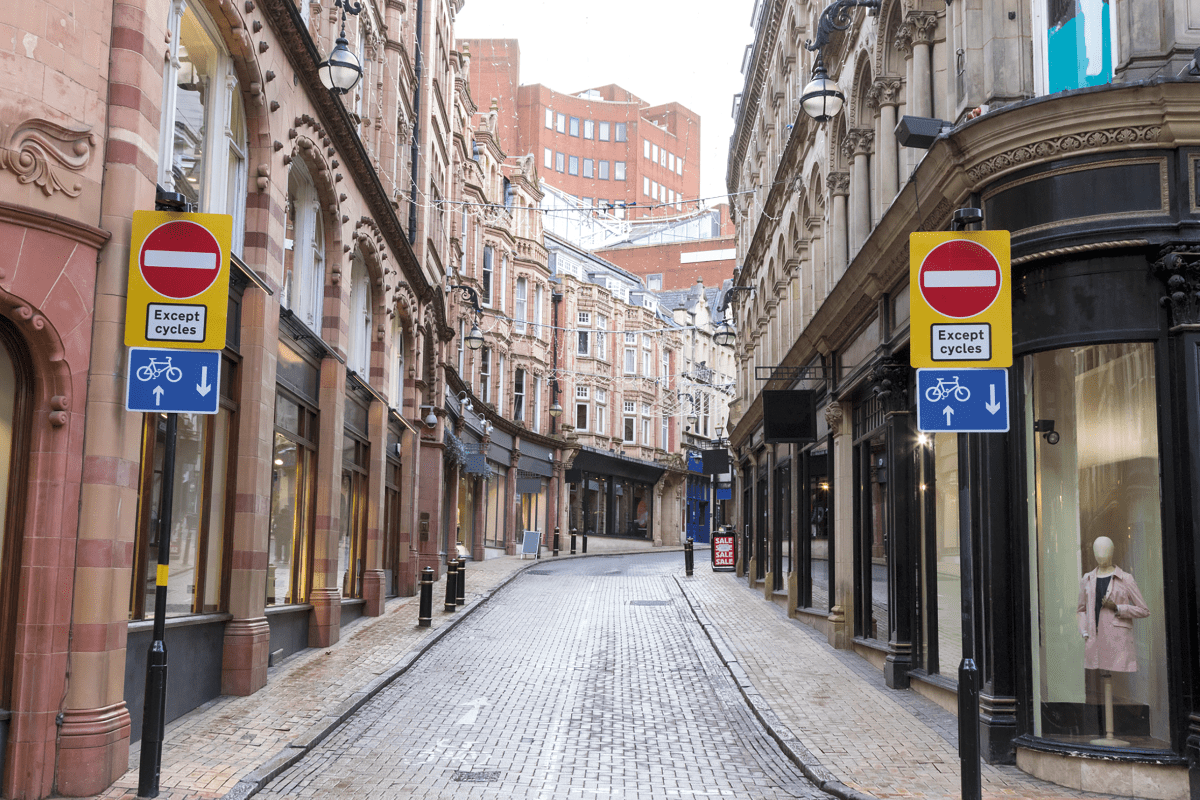Britain’s high streets provide a contrast of empty shops and charity shops, to market towns full of independent retailers and cities with flagship stores from international brands. For many, the past few years have been a challenge with different experts called in by Government to offer reports and conclusions into how to save the high street.
High Streets Minister Jake Berry MP has announced a new panel of experts which has been appointed to diagnose issues currently affecting the health of the high streets and advise on the best practical measures to help them thrive now and in the future. The panel is chaired by Sir John Timpson, Chairman of multiple service retailer Timpson. The panel’s review will focus on what consumers and local communities want from their high streets as well as looking at the current challenges and working out options to ensure that town centres remain vibrant.
The government is committed to helping communities adapt with high streets remaining at their centre. “High streets of the future will still be commercial centres but consumers now look for a wider range of experiences, from leisure to health services. Our future high streets may well feature more homes, childcare centres and gyms to bring people back and ensure that they keep returning,” says High Streets Minister Jake Berry MP.
Timpson is being realistic to the difficulties that the high street is facing and understands that the panel cannot offer an instant, quick fix solution. He does though hope that it will be able to “identify practical and common sense decisions that will help the government provide the support that local communities and businesses need to provide the leisure and shopping facilities people will want 25 years from now.”
However, while the review panel includes many eminent members from retailing, property and government organisations, shopworkers trade union Usdaw is “disappointed” that a retail staff representative hasn’t been included. Usdaw’s new General Secretary Paddy Lillis has recently called on national and local government, unions and employers to form a joint retail task group to protect the high street, safeguard jobs and ensure good wages and good training in the retail sector.
The review has though asked members of the public – and young people in particular – what they want from the high streets of the future.
INDUSTRY RESPONDS
However, David Jinks, Head of Consumer Research at parcel delivery comparison site ParcelHero believes that the review may be a case of too little, too late. “To be brutally honest, the diagnosis is already clear, and it’s terminal unless the Government and retailers act swiftly,” he says.
ParcelHero’s own research suggests that by 2030 over 40% of all retail sales will be online and up to half of the existing High Street stores will have closed. “The High Street is sinking fast from the perfect storm of home shopping and ruinous business rates that retailers have been screaming in protest against for some years,” he says.
Jake Berry MP believes that the high streets of the future “may well feature more homes, childcare centres and gyms to bring people back and ensure that they keep returning”. The high street is going to need more than this though as these “aren’t even going to be sticking plaster over the empty shop windows on our town centres,” says Jinks. “Let’s hope Sir John’s panel have fresher ideas.”
He adds: “We all need a reason, or at least an excuse, to return to the High Street. High Street stores must offer a great shopping experience, and more product expertise. Business rates need to be slashed… Many of the biggest names on the High Street have to get to grips with a combined multiplatform approach to sales: or join the ranks of BHS and Toys ‘R’ Us. It looks a talented panel Sir John Timpson is to chair, and we’re hoping for weightier ideas than gyms from it.”
The announcement of the panel comes at a time when another heavyweight of the high street, Bill Grimsey, is calling on government to act now and “carry out serious independent reviews” of what he believes are barriers to the progress of transforming high streets. These obstacles include business rates, the complex layers and bureaucracy of local government and how change can be financed.
One of 25 recommendations in the evidence-based ‘Grimsey Report 2’ is for government to “accept that there is no confidence, in business rates, it is accelerating shop closures in many towns and is an outdated and unfair tax that needs a major overhaul.” The report calls for it to be replaced with a tax based on land, area or property value or for a sales tax to be introduced instead.
The report also calls on towns to develop their own plan and USP, under strong leadership and for local authorities and other agencies to share best practice rather than working in silos.
Adjustments and adaptation needs to happen swiftly with support from central government otherwise he warns “communities will pay a heavy price and a key part of our national character will be lost. We will no longer be a nation of shopkeepers and Britain will be a lot poorer as a result.”
eBay would add a further recommendation to Grimsey’s report in the shape of closing the digital gap between online and brick and mortar retailing by supporting SMEs to make the most of the digital opportunity and allowing them to reach more customers nationally and internationally.
“We should be very proud of the incredible strength of the small businesses of the UK and must seek to empower them more,” says Rob Hattrell, UK VP, eBay.
Jat Sahi, Digital Lead Retail, EMEIA at Fujitsu believes that the idea of designing town centres as community hubs could actually prove positive for retailers, as having such attractions nearer stores would very likely keep a retailer front-of-mind for consumers and make them more likely to be visited.
“If cities and towns do take up these recommendations, it will be absolutely vital for those still on the high street to maximise their already reduced presence. But regardless of this, with consumer confidence trending downward, competition is fierce and both customer loyalty and shopping experience are weighing in. If they can avoid being the next generation of retailers to be pushed out of the high street for good, by deploying technology in a visionary manner they could be looking forward to consumers being physically much nearer to them which could be a renaissance for the high street,” he says.
DATA-DRIVEN HIGH STREETS
Another organisation is arguing that investment and education are needed in order to create data-driven destination high streets which are crucial to the future of shopping.
SavetheHighStreet.org brings together independent retailers, local government, town centre organisations and high street champions from across the country in a bid to “level the playing field, accelerating the whole high street’s transition to a better connected, digitally enabled, more sustainable high street.”
It says that this is the most transformational period in the history of high streets and that the future will depend on how businesses act now.
“If we can create and safeguard the conditions for success on the high street, a stronger, better connected, digitally enabled future high street will emerge,” it says in its 2018 manifesto. “If we work together and with conviction we can live in a world where the high street economy thrives for generations to come.”
Again, investment, support and the nurturing of innovative solutions are being called upon to help bring about the high street of the future.
It seems as if everyone is wanting the same thing, the transformation of the high street. As the Grimsey report says, “It is now obvious that we are at the beginning of enormous social and economic change. The Fourth Industrial Revolution will be the most disruptive period any of us has ever known, as we continue to witness a blurring of the real world with the technological world.”
Will the country move at the pace of past revolutions or can we take a lesson from Moore’s Law and move everything along at the pace of technological change? Society is changing, old ideas are being overturned swiftly and a number of strong, visionary leaders have taken on ideas from the first Grimsey review to change their own high streets.
It can be done at a local level, retailers and technology providers are ready but support is needed from landlords and from central government in the form of investment in high streets through alteration of the business rates barrier.





